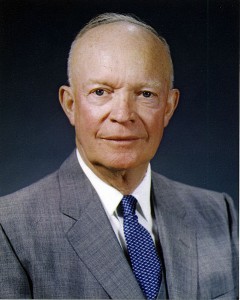Discuss why and how the Eisenhower administration became involved in Guatemala. What were the ramifications of U.S. policies in Guatemala?
 During the early months of 1962, hordes of demonstrators took to the streets in protest against the social and economic policies of the Guatemalan government headed by General Miguel Ydigoras Fuentes. The protesters were also disappointed with the level of corruption and election malpractices under the leadership of General Fuentes. Students and people from the working classes joined this protest, which was gaining momentum. Police and military forces eventually broke this democratic and peaceful form of public expression, but not before a series of hostile confrontations and a general strike had taken place. The American government, caught up in the cold-war frenzy, found a case for interfering with the internal governance of Guatemala. The American government, under the leadership of Dwight Eisenhower, saw this as a communist threat. Guatemala, being so close to the North American continent was touted as a “serious threat” for the “democratic and capitalistic ideals” of the United States.
During the early months of 1962, hordes of demonstrators took to the streets in protest against the social and economic policies of the Guatemalan government headed by General Miguel Ydigoras Fuentes. The protesters were also disappointed with the level of corruption and election malpractices under the leadership of General Fuentes. Students and people from the working classes joined this protest, which was gaining momentum. Police and military forces eventually broke this democratic and peaceful form of public expression, but not before a series of hostile confrontations and a general strike had taken place. The American government, caught up in the cold-war frenzy, found a case for interfering with the internal governance of Guatemala. The American government, under the leadership of Dwight Eisenhower, saw this as a communist threat. Guatemala, being so close to the North American continent was touted as a “serious threat” for the “democratic and capitalistic ideals” of the United States.
So, what followed was an influx of American support for the deposed General Fuentes and against the egalitarian revolutionary forces. And President Eisenhower was instrumental in the United States’ involvement in Guatemala. But unfortunately, things did not go in favor of the American mission. What followed was a relentless hostile engagement between the revolutionary and the counter-revolutionary forces (the latter supported by the Eisenhower government). By the end of 1976, as many as 20,000 innocent Guatemalans lost their lives in the process. And the whole episode ended as a public relations disaster for the United States. The ramifications of that dark episode have made Latin American countries suspicious and skeptical of the American government policies, even to this day.